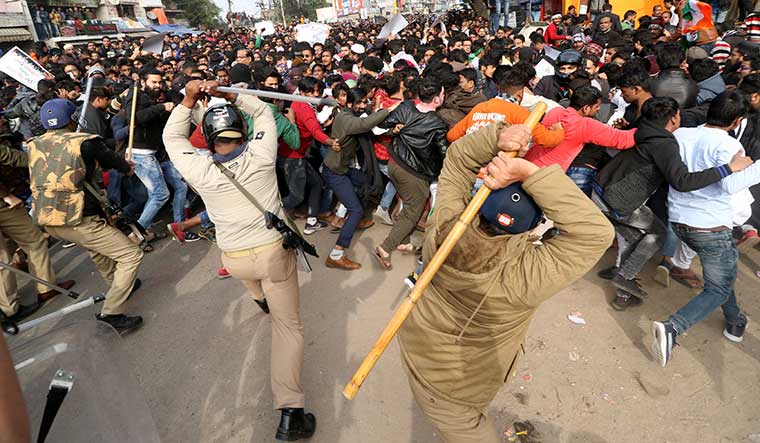There is a castle of cards crumbling in Uttar Pradesh. And it is the courts that are kicking that castle built around the arrest of “violent” anti-Citizenship (Amendment) Act protestors in Lucknow. As bail is being granted to those accused by the police under sections 147, 148, 149, 152, 307, 323, 504, 506, 332, 353, 188, 435, 436, 120B and 427 of the Indian Penal Code and for destruction of public property under sections 3 and 4 of the Prevention of Damage to Public Property Act, 1984, the police’s version of events is crumbling.
Yet as Sarwan Ram Darapuri, a 77-year-old retired IPS officer who was arrested despite being under house arrest, says, “There is little hope of any further open protests in the state. The government has terrorised people by issuing recovery notices. While the discontent against the state government shall remain, people will be scared to display it openly.”
Granting bail to Darapuri, an additional district court in Lucknow noted that his name was not in the list of 34 people that the Lucknow police had initially booked at Hazratganj police station (under which the main protest site falls). The police told the court that Darapuri was guilty of inciting people at the Kaifi Azmi Auditorium and at the statue of B.R. Ambedkar in Hazratganj on December 6, 2019. He was among the many activists and organisations that had repeatedly asked people to attend the anti-CAA protests in large numbers. “On the day of the violence, the accused had not stepped out of his house and was not present at the site of the violence,” said the court. It further noted that the first statement of the accused was taken on December 20, and his name was appended to an FIR that had already been filed a day earlier.
But while the court will take its time to highlight the many discrepancies in police claims, as Darapuri says, the chances of any anti-CAA stir in the state seem bleak.
THE WEEK contacted the family of a young man who was arrested while taking his father to hospital on the day of the protests. “We are too scared. We will not speak. Anything that we say can be used against us,” says a relative. Three members of the family were arrested on December 19, but have since been released.
Granting bail to one Robin Verma, an activist and teacher in a local degree college, the Sessions Court (1) noted that the prosecution had appended an order from the Lucknow district magistrate dated December 16, 2019, to prove its point that the district was under Section 144 and thus, the gathering of five or more persons was unlawful. This order was issued before the Supreme Court judgment on the Ayodhya title suit, and it read: “Law and order might be negatively impacted in light of the decision on the Ram Janmabhoomi Babri Masjid dispute...” While Section 144 is imposed for two months and can be extended by the administration, the court called into question whether the above order, an extensive collection of 38 points, was circulated among the public through local newspapers. “No material has been put forth by the investigation regarding this point,” noted the court.
The same bail order also questioned the police claim that not a single police bullet was fired. “Police fired tear gas, rubber bullets and four cartridges from a short-range shell,” it said. “Long-range tear gas, chilli grenades and firing was also used... constable’s magazine stand was broken in the stone pelting.”
Verma’s friend Rohit Shukla says the bail would not be a panacea for Verma’s troubles. “The college has suspended him from teaching duties,” he says. “He has two infants to look after. It is unlikely that he will be employed pending completion of the inquiry. What happens to his livelihood now?”
While granting bail to teacher, activist and actor Sadaf Jafar, the judge of Sessions Court (1), Sanjay Shankar Pandey, noted, “The prosecution has said that there is no direct evidence of the accused being involved in the arson... and that it is trying to gather evidence for the same.”
On the policemen who were reportedly hurt by the stone pelting of which Jafar was accused of, the court noted that it had been told by the prosecution that the nature of the injuries sustained by one superintendent of police was “ordinary” and while another “has only complained of general pain”.
As more faults in the police narrative are brought to light, the government will find it difficult to defend its actions in a state that saw violent albeit brief protests against the CAA and the nationwide National Register of Citizens.


